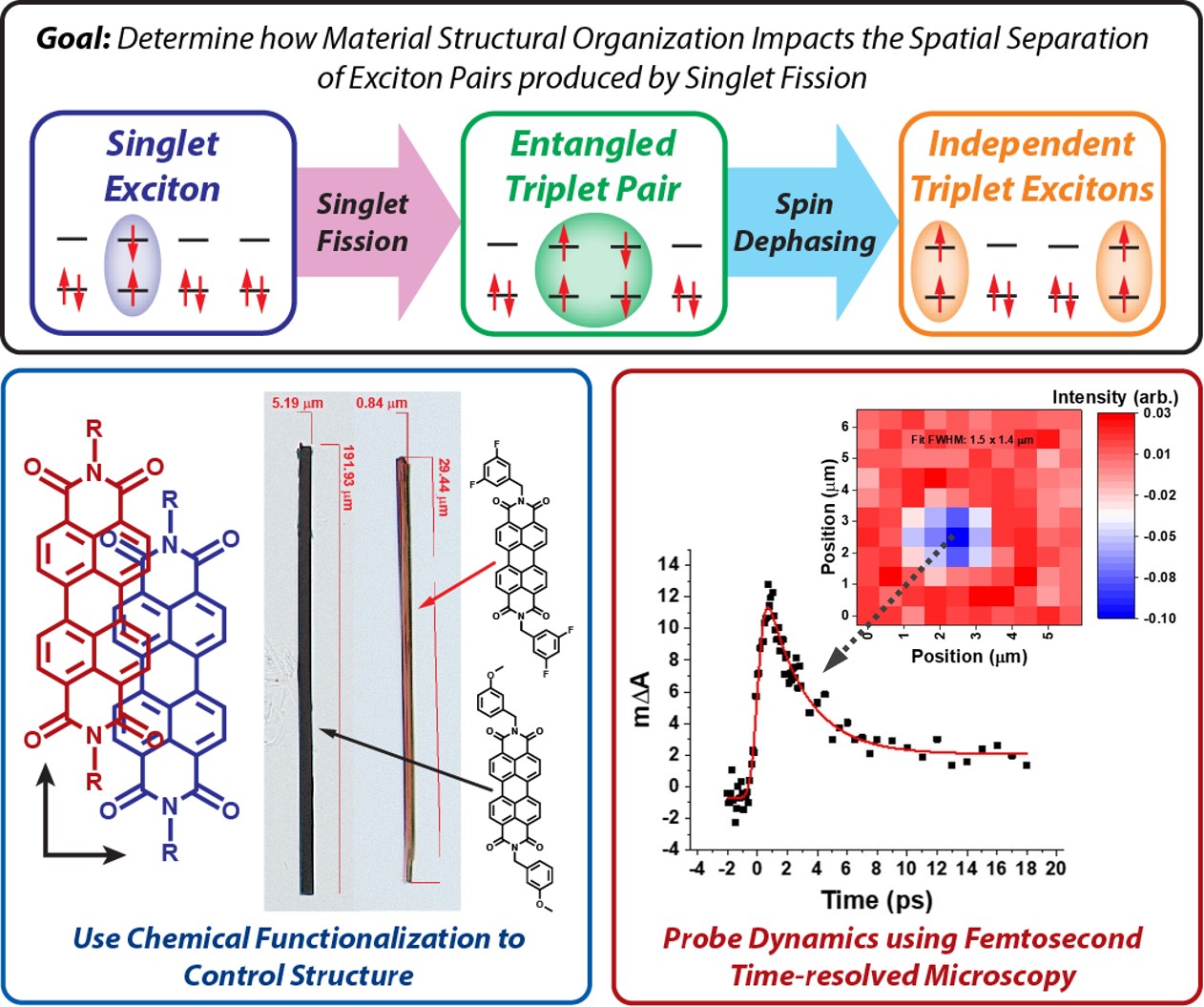
Singlet fission is a process that produces from a single photon a spin-entangled triplet exciton pair. Materials that undergo fission can enable efficient schemes for light harvesting and photocatalysis and offer potential for new quantum information devices, yet designing fission-based applications requires understanding how the nanoscale structure of fission-capable materials impacts the behavior of the exciton pairs they generate. The goal of this seed project is to identify key structure-function relationships that control both the spatial separation and spin decoherence of exciton pairs within singlet fission materials. This will be accomplished using a platform based on perylenediimide molecules whose spatial arrangement in solid structures can be chemically controlled coupled with time-resolved photoelectron and transition absorption microscopy measurements that will probe time-dependent interaction between exciton pairs. The outcome of this work will be a set of guiding principles for designing materials that exhibit unique exciton dynamics needed for applications in energy conversion, catalysis, and computation.

